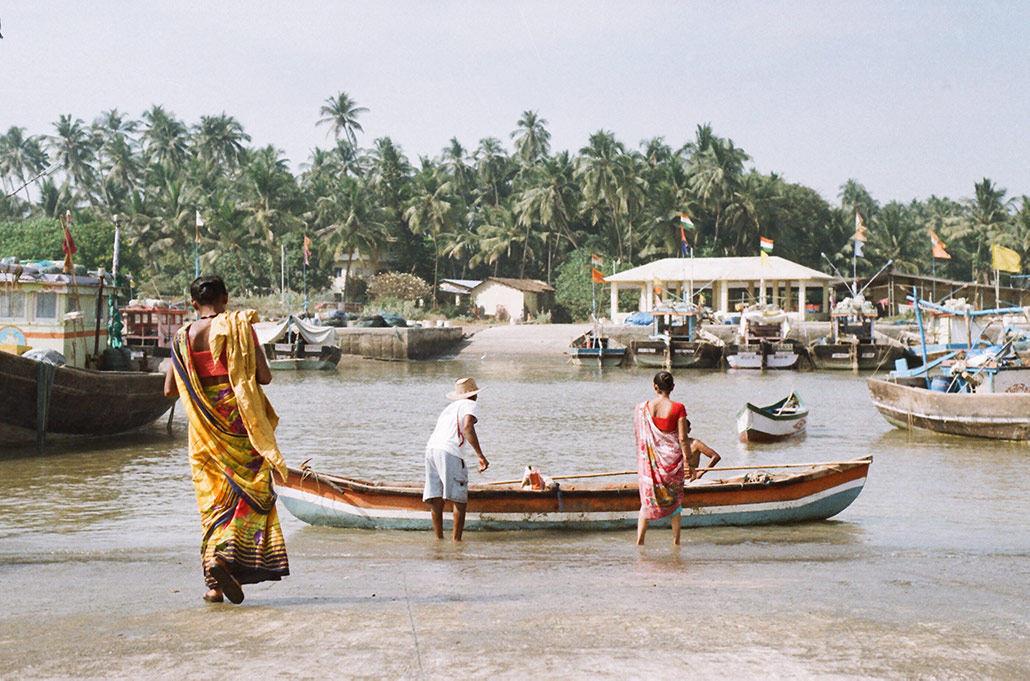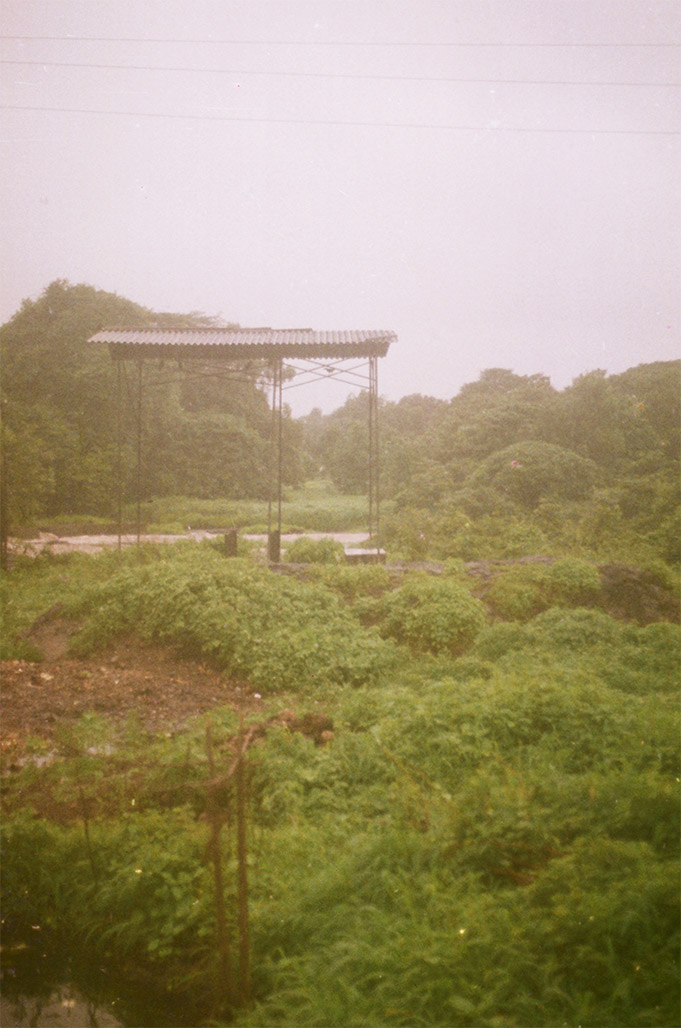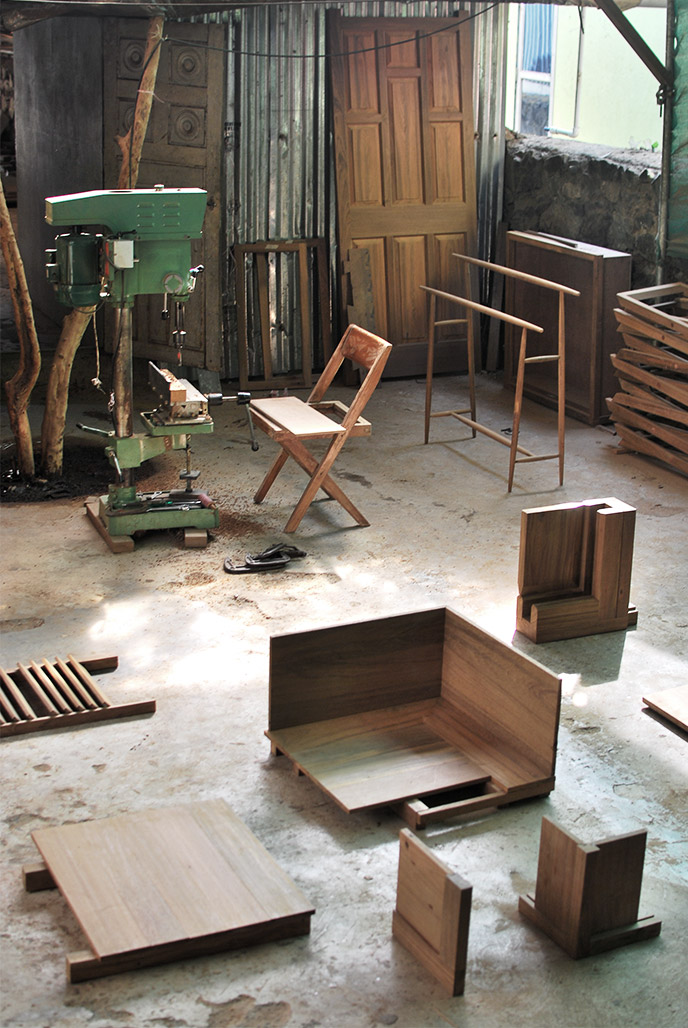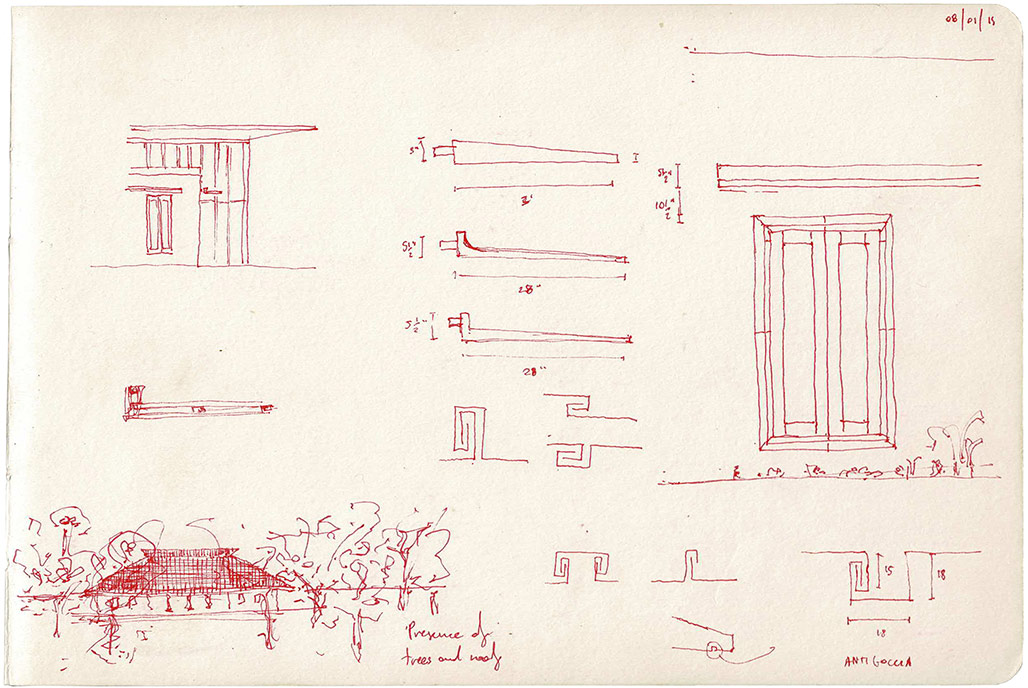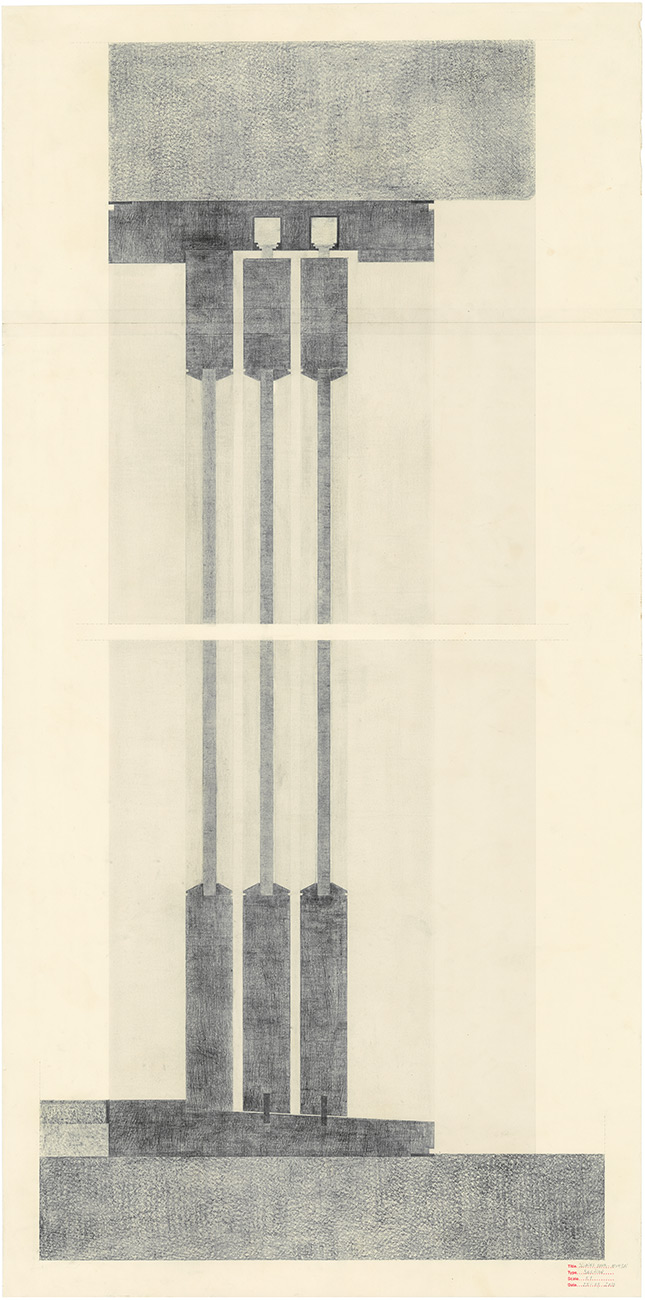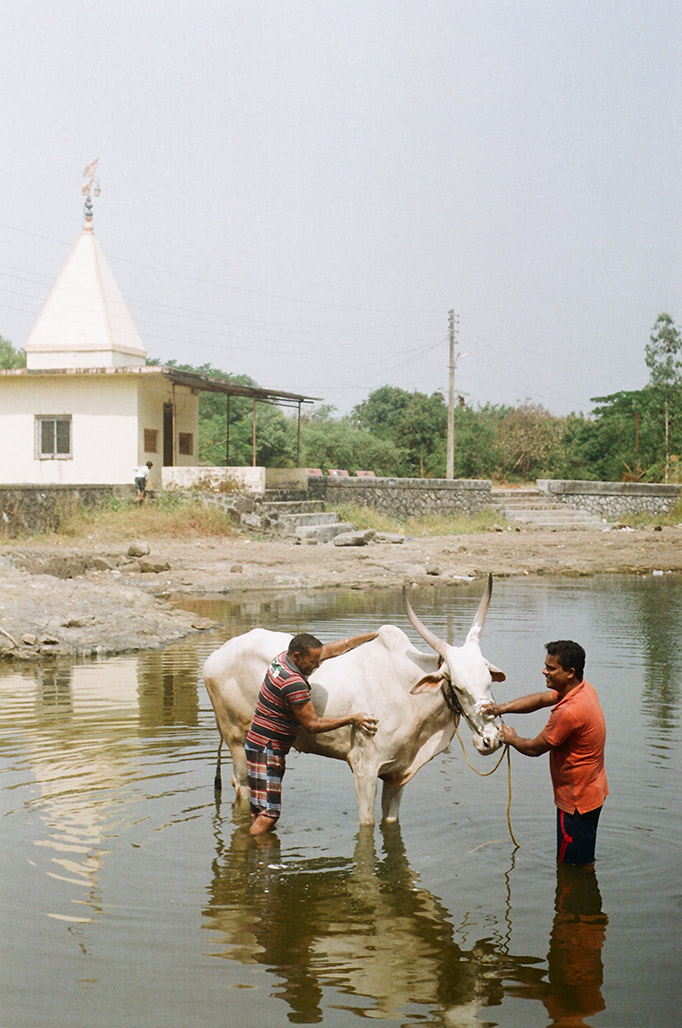
Bamansure
Bamansure, India. 28.03.2014“Bamansure, at first glance, is a cluster of a few houses and families on the coast that stretches south of Mumbai Bay. This small village wakes up with the sunrise and falls asleep in silence shortly after sunset, amidst rice fields, palm trees, mango, and papaya trees.
The landscape’s geometry is simple, almost perfect: to the west, the sea; to the east, the hinterland towards Pune; and to never lose orientation, the north and south held together by a single road that connects the ferries crossing the bay to the rest of the towns along the coast.
People’s movements follow these coordinates, dedicating much of their lives along the north-south road that connects the Port of Mandwa and Alibag, a coastal city and municipal council of Maharashtra. Motorcycles, bicycles, trucks, buffalo-drawn carts, cars, and buses travel the road every day. Along the road, and when I say along, I mean literally overlooking it, a succession of small shops and businesses emerge. From the fruit vendor to the clothing store, to the fishmonger, but also mechanics, electronics, and cellphone shops - nothing is missing. I even found pasta! Here and there, some Mandirs, Hindu shrines, punctuate the succession of villages.
Every morning, crossing the fields, I make my way to Vishwkarma, a carpentry workshop founded by Punamchand Suthar, a Marwari originally from Rajasthan who moved to the state of Maharashtra for work. Punamchand, or as everyone calls him, Punaram, is one of the last generations of one of the many castes of carpenters and artisans who have passed down craftsmanship and knowledge from father to son. In the carpentry, reclaimed wood from old buildings enters and exits as wardrobes, windows, tables, chairs, floors, and sometimes even entire houses built with the attention and care of a small object. Between vices, planes, chisels, and shavings, designs and ideas are inevitably emerging, along with the first notions of the patient woodworking process. From cleaning, to cutting, to preparing joints to join different elements. From shortly after sunrise until after sunset. With the new moon day off.
A little further south is Patil’s workshop. Patil, a local and resident of Bamansure, is friendly and affable and works in a space as large as a garage painted in light blue lime and a shutter. He works to produce any object that can come out of a lathe machine. That is, by subtracting material through its rotation. And here I want to emphasize the high and refined skill of an entire people, the Indian people, founded on the ingenuity of doing and solving complex things with a few simple operations.”
Between the carpentry, Patil’s workshop, and the veranda of my house, crossing the fields on a motorcycle, the first objects took shape in the light of a late March afternoon. At the time, I didn’t know it yet, but Bamansure had just been born.




